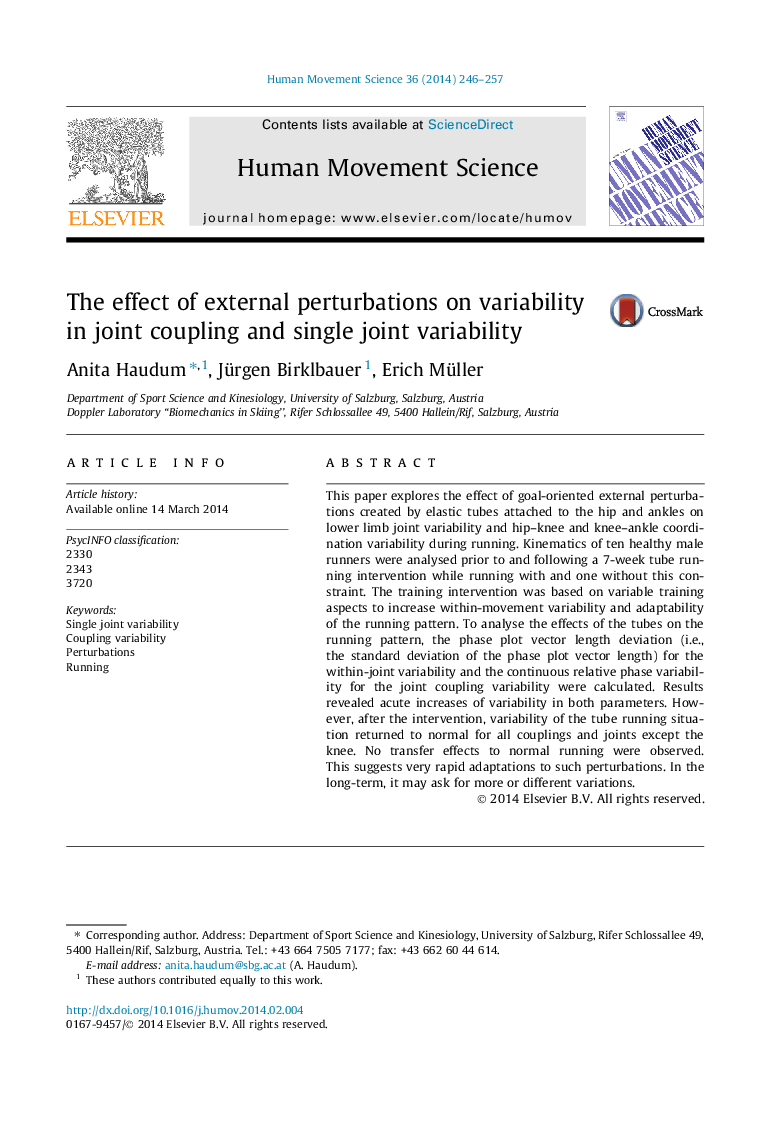| Article ID | Journal | Published Year | Pages | File Type |
|---|---|---|---|---|
| 928337 | Human Movement Science | 2014 | 12 Pages |
•Immediate increase in single joint variability and coupling variability during the first rubber tubing run.•Adaptation to training device occurred quite rapidly.•Difference in the amount of the effect between single joint and coupling parameters.•Only short initial increase in variability after the intervention.•No transfer effects on single joint variability or coupling variability in normal running.
This paper explores the effect of goal-oriented external perturbations created by elastic tubes attached to the hip and ankles on lower limb joint variability and hip–knee and knee–ankle coordination variability during running. Kinematics of ten healthy male runners were analysed prior to and following a 7-week tube running intervention while running with and one without this constraint. The training intervention was based on variable training aspects to increase within-movement variability and adaptability of the running pattern. To analyse the effects of the tubes on the running pattern, the phase plot vector length deviation (i.e., the standard deviation of the phase plot vector length) for the within-joint variability and the continuous relative phase variability for the joint coupling variability were calculated. Results revealed acute increases of variability in both parameters. However, after the intervention, variability of the tube running situation returned to normal for all couplings and joints except the knee. No transfer effects to normal running were observed. This suggests very rapid adaptations to such perturbations. In the long-term, it may ask for more or different variations.
